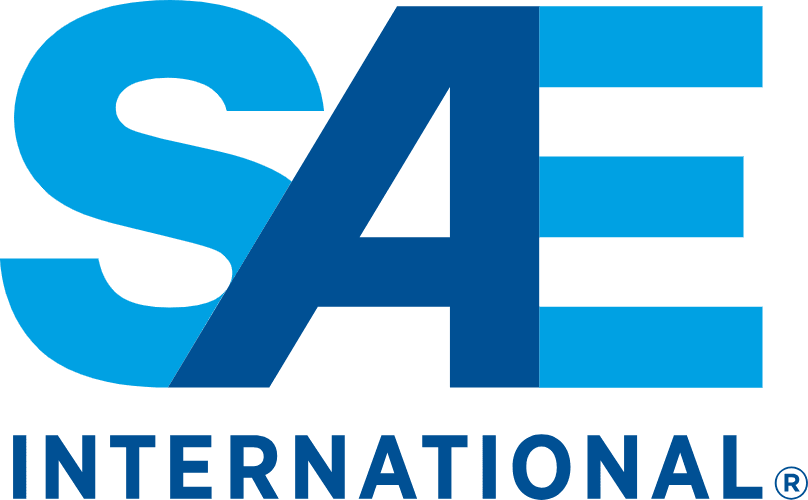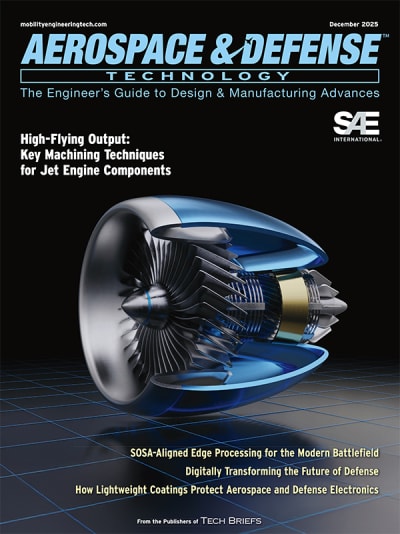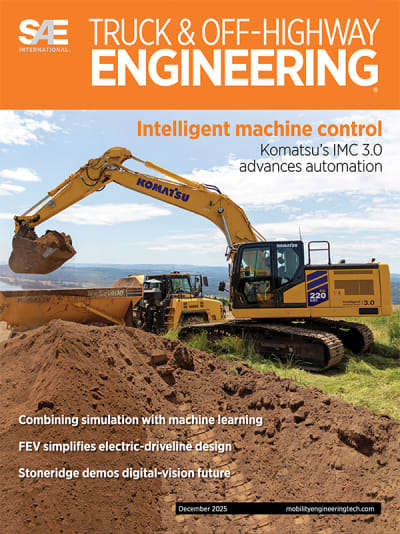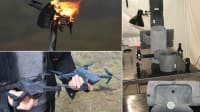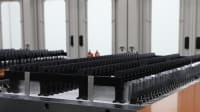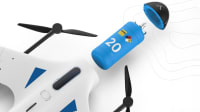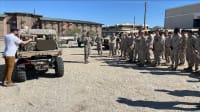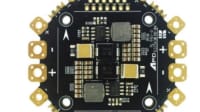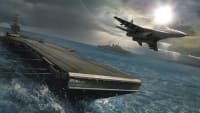Design Considerations for Rugged Naval Equipment Enclosures
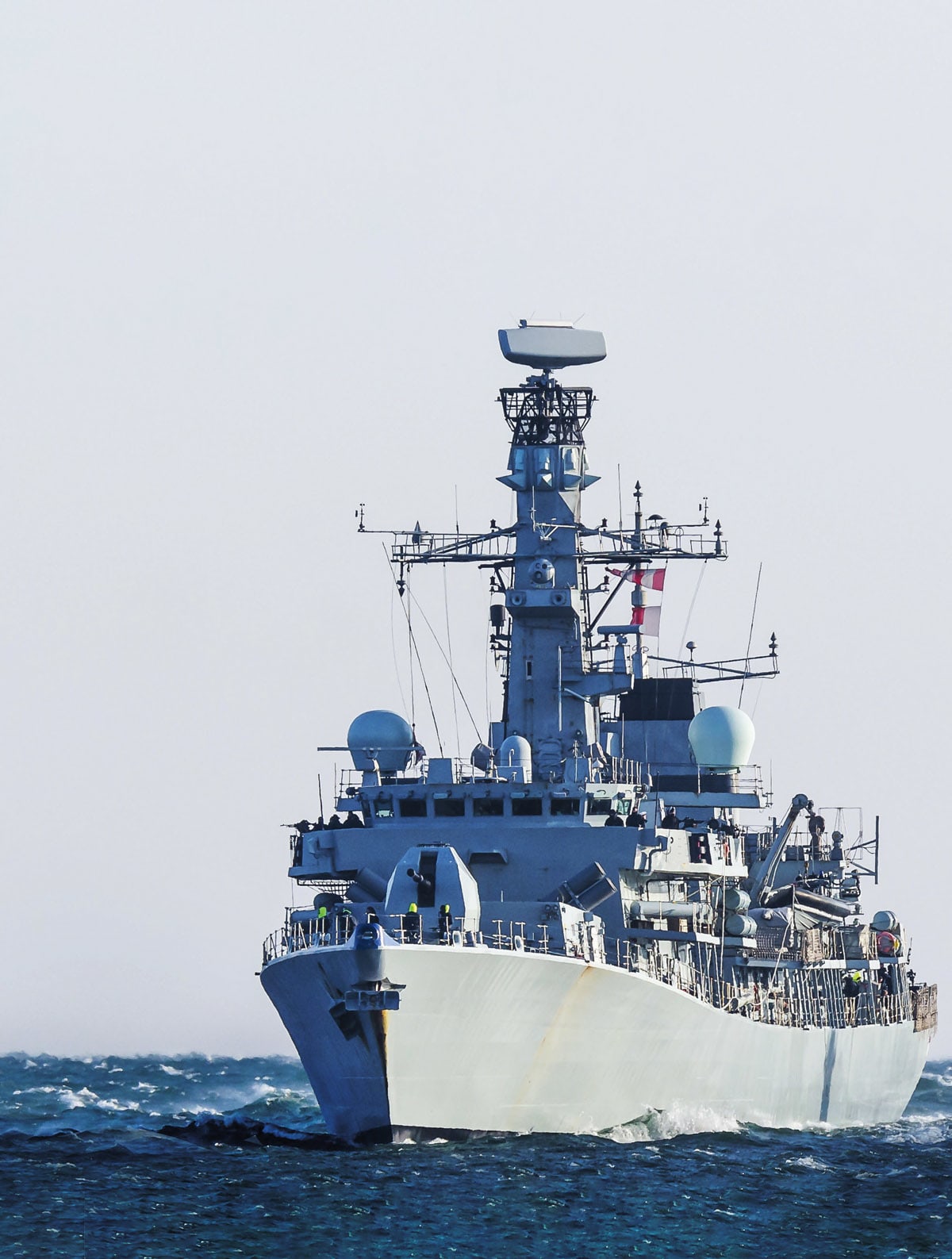
Shipboard cabinets and consoles designed to house naval mission electronics, processing, storage, connectivity, and human/machine interfaces (displays and workstations) must protect mission systems from shock and vibration, electromagnetic interference (EMI), salt water and other ingressions, and provide security and efficient cooling for long-term reliability. The expertise required to design integrated enclosures that meet the specialized needs of naval applications, such as satisfying MIL-DTL-901 shipboard machinery testing, is often best provided by a supplier dedicated to this field. Ideally, the naval enclosure supplier should be able to provide a “one-stop-shop,” from a functional system/ sub-system specification to delivery of fully qualified equipment. This article will cover the design considerations and requirements necessary to field new capabilities and provide technology refresh solutions for deployed naval electronics.
For many customers, the best solution is a “one-stop-shop” for complete integrated enclosure solutions, from specification to the delivery of fully qualified equipment. Naval enclosure suppliers can leverage the advantages of the best available commercial technology and practices and tailor them to the needs of the defense industry. Leveraging COTS technology and a modular approach to equipment enclosure construction and payload integration enables more vertical integration capability, design maneuverability, better affordability and lower technology and schedule risk.
Shipboard equipment enclosures are built for specific applications requiring in-house system architects to routinely engage with in-house packaging design teams to ensure compatibility and functionality. As the Navy adds new and refreshes existing mission capabilities, the protective cabinets, and consoles that house these systems become more functional and easier to deploy and maintain through innovative design, production, qualification, and integration solutions. New, efficient approaches to cabinet and console design, fabrication, integration, and qualification are enabling prime defense contractors to equip the Navy faster with better technology while increasing ROI.
Program Management

The successful design of a new naval enclosure starts with a good program management process that can deliver oversight from start to finish. Ideally, the enclosure supplier’s program managers will be the single point of contact and responsibility for customers, eliminating the need for complicated communications across internal groups and departments. By using tracking, reporting, communication, risk-mitigation, and phase gate tools that mirror the tools used by prime contractors, communications are simplified and can provide full program transparency. The program managers are responsible for overseeing program execution from functional specification to customer installation. They should continually monitor the programs they oversee, mitigate risks, and ensure design optimization using industry-standard stage gate reviews.
Integrated Engineering and Design
Naval enclosures need to offer the highest levels of mechanical and environmental protection for the equipment they house. Systems should be built from the ground up using components and assembly approaches that are intended to meet or exceed MIL-DTL-901 (shock) and MIL-STD-167 (vibration) for mission-critical naval and other harsh environmental
High MIL-DTL-901 first-pass rates can be achieved by holistically evaluating new functional specifications for performance, functionality, and dexterity against MILSTD requirements, ensuring that enclosures and systems are qualification ready. Enclosure suppliers with extensive in-house thermal, structural, environmental, and EMI/EMC engineering expertise, gained over hundreds of naval programs, can systematically identify and mitigate the technical risks associated with a new functional specification.
Payload Pre-Integration

IPC-A-620 and J-STD-001 certified operators should perform both power distribution and payload wiring. Soldering, crimping and wiring integrity should be performed by IPC-J-STD-001 and IPC/WHMA-A-620 trained assembly technicians. Automated test equipment can provide point-to-point electrical verification (continuity, dielectric strength and insulation resistance to IPC-A-620 or MIL-STD-202), with fiber optic cable testing performed to MIL-STD-2042.
Human Machine Interfaces (HMI)
Some enclosures will require flat-panel displays (FPD) for the human-machine interface required for equipment operation and monitoring. These displays need to be ruggedized and reliable and offer the highest color fidelity in all conditions over extended periods. FPDs should be procured, validated, and integrated using cabling and interfaces that offer the highest level of turn-key integration. Additional HMI equipment that must be integrated include keyboards, trackballs, and joysticks. The interface between the sailor and the equipment should follow the guidelines of MIL-STD-1472 and ASTM-F1166.
Engineering and Design Capabilities
To deliver environmental protection from liquid and other contaminant ingression, electromagnetic interference (EMI), and limit acoustic noise emissions, naval enclosures and integrated systems should be designed, built, and tested for compliance with MIL-STD-108 and MIL-STD-810 for drip, heat, and humidity environmental protection, MIL-STD-461 for EMI compliance, and MIL-STD-740 and MIL-STD-1474 for acoustic noise generation, among others.
COTS and Modularity: Engineered for Ease of Use

The COTS approach to designing naval enclosures enables the use of common building blocks to add functionality while lowering technology risk and cost. The philosophy of this design approach is seen in the use of standard tools for maintenance, use of captive fasteners that can be moved and replaced, removable doors and panels that can hinge left or right, extension slides for full payload equipment access and easy to reroute and quick-disconnect cable and power distribution harnesses. This approach also reduces maintenance complexity, keeping system downtime to a minimum.
Due to their size and weight, U.S. Navy ruggedized enclosures do not easily fit through a ship’s hatch. Cutting and removing portions of a ship’s infrastructure is a common practice required to maneuver and install equipment enclosures above and below decks. Besides significant cost increases and schedule delays, shipboard enclosure installations are one of the leading causes of Navy shipyard injuries during a vessel’s maintenance period. Enclosure and system solutions should be purposely built to mitigate these high risks through modularity and hatchability.
Modularity and hatchability design approaches add significant program design and installation maneuverability. Modularity aids rapid solution development and reduces risk by leveraging proven reusable technology blocks with standard interfaces designed for easy disassembly and reassembly. Hatchability and the ability to move enclosures, their payload components, cooling, and power distribution systems through hatches without cutting bulkhead holes and quickly reassemble them where they are required is a significant cost-saver for prime contractors.
A key feature of modularity involves the use of cable ladders. This cable routing approach allows wire harness assemblies to be removed from the enclosure without the complexity of undressing the cables and wiring. The cable ladders can be safely removed from the enclosure, with the harness remaining intact and secured. Upon passage through hatches, harnesses are easily reinserted into the cabinet, then connected to the payload and enclosure’s connector panels.
When disassembled, modular subassemblies should remain within MIL-STD weight limits for two people to carry (less than 70 lbs.) and require no rigging. This construction approach enables enclosures to be added as necessary and is not dependent on a hull work schedule.
Reliable Payload Cooling
Naval enclosures are designed to protect heat-generating electronics from salt water and other contaminants requiring them to be sealed. Dissipating this heat for long, reliable system operation requires careful consideration of the enclosure’s payload, installation environment, and cooling resources available. As such, cooling solutions may be passive (convection, conduction), forced air, liquid (water or refrigerant), or a hybrid of several cooling schemes.
3D simulation software can model each enclosure configuration’s thermal characteristics for maximum cooling efficiency. From this computational fluid dynamics (CFD) data, an optimal cooling approach based on the functional specification requirements can be determined and used to make payload layout recommendations.
Air Cooling

The heat generated in equipment enclosures that cannot be exhausted by conduction requires active cooling to maintain reliable system operation. The primary approach is forced convection air-cooling that draws air from the ambient environment through dust/EMI filtered air vents, typically located at the front and rear of the enclosure. The positioning of intake and exhaust air streams are optimized via CFD for efficient enclosure cooling and are tailored to payload layout and heat-generating sources. For additional reliability, forced-air cooled solutions may include our fan-control units that react to temperature variations to speed up/slow down the cooling fans.
Air-to-Liquid Cooling
Air-to-water heat exchangers create a closed-loop airflow across the payload equipment and recirculate it through a cooling coil that typically uses a refrigerant (R134a) or a mixture of ethylene glycol and water. This cooling approach requires no external vents, as the air within the enclosure is sealed from the external elements, making it ideal for environments with no cool or clean air source and quiet spaces. Cooling capacity should be scalable based on future needs and may be redundant for additional system reliability. Cooling systems should be ruggedized for additional level of reliability over similar commercial products.

Power Delivery and Distribution
Power delivery, conversion, conditioning, distribution, and electrical isolation of payload equipment are critical functions of all equipment enclosures. Power requirements must be customized to specific equipment enclosure configurations. Using the COTS approach enables interoperable technology building blocks to be optimized for efficient enclosure integration of custom power distribution systems.
While battery technology is evolving quickly, traditional lead-acid banks remain the common choice onboard ship. However, well-established characteristics aside, lead-acid batteries are heavy and space-hungry. As NAVSEA/ NSWCCD continues to assess lithium iron phosphate (LiFePO4) batteries for broader naval use, it’s important for suppliers to use best-in-class commercial products that offer significant reliability, power density, and extended life benefits to further demonstrate the viability of the new battery chemistry.
Security and Monitoring
Although access to shipboard equipment is limited, additional security or alarms are often required for monitoring and restricting access to sensitive and mission-critical systems. Enclosures should have robust doors and access panels that may be lockable, secured with security fasteners, actively monitored, or remotely actuated. Monitoring may be local or via LAN for remote monitoring and door actuation.
The more reliable the naval system, the longer between failures resulting in reduced maintenance, and a low mean-time-to-repair (MTTR) facilitates quick recovery. Enclosure suppliers should comply with MIL-HDBK-217 and MIL-HDBK-472 for calculating system reliability.
The qualification process for naval enclosures is an expensive process, especially if the equipment under test fails and needs to be re-engineered, which can negatively affect schedule. High-impact shock qualification per MIL-DTL-901 using COTS payload equipment is often identified as a program risk. As such, the assurance of qualification approval is critical. Engineering and test teams should have deep electromechanical, shock, and vibration expertise across many naval programs. This knowledge enables shock testing to be de-risked via a robust prior engineering phase that assesses any system fragility and implements shock mitigation features to lower equipment exposure, ensuring system survivability.
Qualification capabilities should include shock, vibration, acoustic, environmental, and emissions testing. Going beyond requirements for initial system qualifications, it’s also ideal for the enclosure supplier to have test capabilities that support repeated production unit airborne and structureborne acoustic signatures. Qualification Test Procedure (QTP) domains should include:
MIL-DTL-901 & MIL-STD-810 for shock
MIL-STD 167-1 for vibration
MIL-STD 461 for EMI
MIL-STD 810 for environmental protection (drip)
MIL-STD 740for acoustic noise
MIL-STD 810 for temperature and humidity
This article was written by Frederic Sainclivier, Senior Manager, Engineering, Curtiss-Wright Defense Solutions (Ashburn, VA), 901D Products. For more information, visit here .
Top Stories
INSIDERDefense
![]() F-35 Proves Nuke Drop Performance in Stockpile Flight Testing
F-35 Proves Nuke Drop Performance in Stockpile Flight Testing
INSIDERMaterials
![]() Using Ultrabright X-Rays to Test Materials for Ultrafast Aircraft
Using Ultrabright X-Rays to Test Materials for Ultrafast Aircraft
INSIDERManufacturing & Prototyping
![]() Stevens Researchers Test Morkovin's Hypothesis for Major Hypersonic Flight...
Stevens Researchers Test Morkovin's Hypothesis for Major Hypersonic Flight...
INSIDERManufacturing & Prototyping
![]() New 3D-Printable Nanocomposite Prevents Overheating in Military Electronics
New 3D-Printable Nanocomposite Prevents Overheating in Military Electronics
INSIDERRF & Microwave Electronics
![]() L3Harris Starts Low Rate Production Of New F-16 Viper Shield
L3Harris Starts Low Rate Production Of New F-16 Viper Shield
INSIDERRF & Microwave Electronics
Webcasts
Energy
![]() SAE Automotive Engineering Podcast: Additive Manufacturing
SAE Automotive Engineering Podcast: Additive Manufacturing
Manufacturing & Prototyping
![]() A New Approach to Manufacturing Machine Connectivity for the Air Force
A New Approach to Manufacturing Machine Connectivity for the Air Force
Automotive
![]() Optimizing Production Processes with the Virtual Twin
Optimizing Production Processes with the Virtual Twin
Power
![]() EV and Battery Thermal Management Strategies
EV and Battery Thermal Management Strategies
Energy
![]() How Packet Digital Is Scaling Domestic Drone Battery Manufacturing
How Packet Digital Is Scaling Domestic Drone Battery Manufacturing
Materials
![]() Advancements in Zinc Die Casting Technology & Alloys for Next-Generation...
Advancements in Zinc Die Casting Technology & Alloys for Next-Generation...
